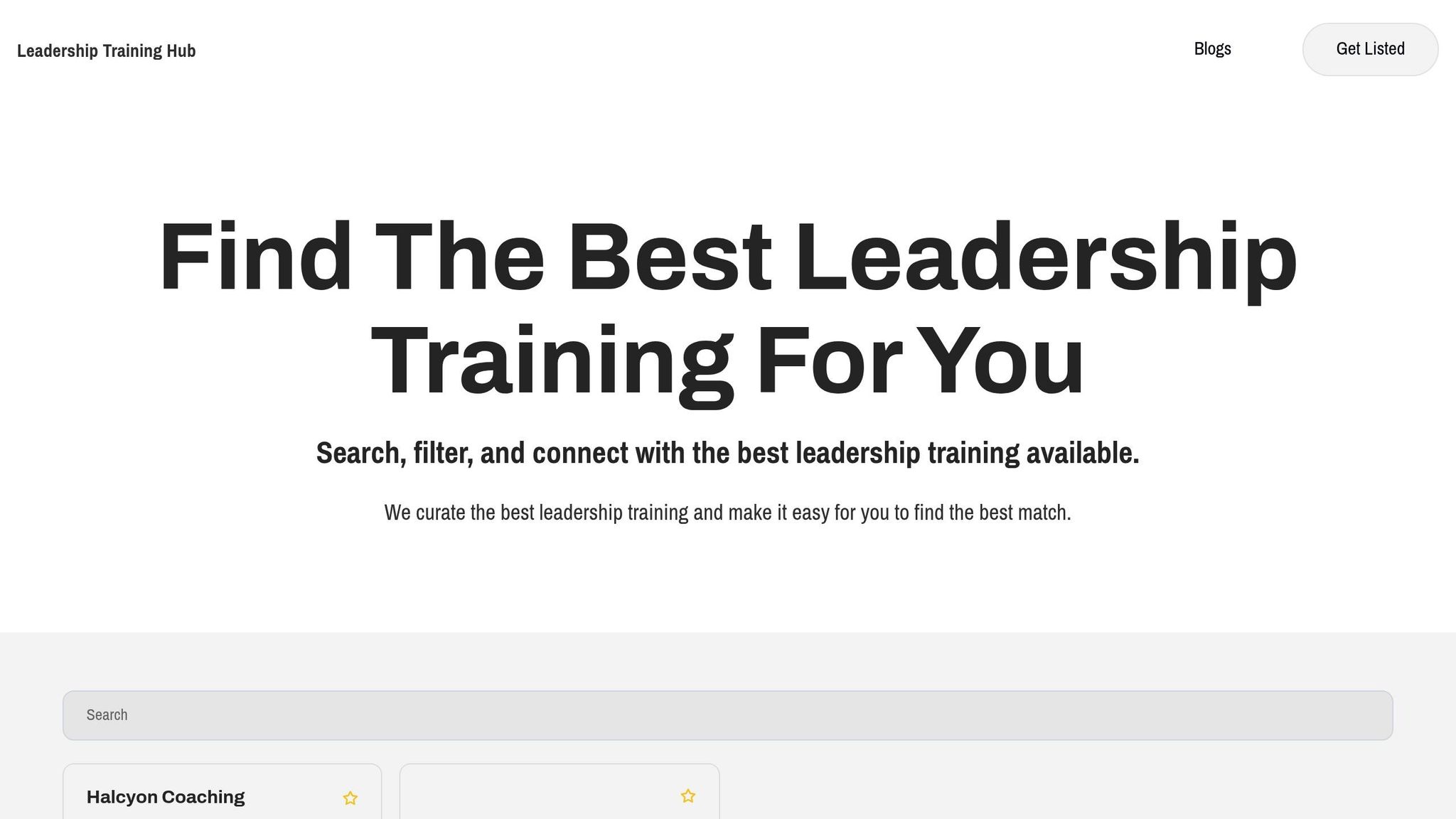Self-awareness is one of the most important traits for effective leadership, yet only 10–15% of leaders truly possess it. Leaders with higher self-awareness are 10% more effective, make better decisions, communicate clearly, and manage teams with greater success. This skill involves knowing your strengths, weaknesses, emotions, and understanding how others perceive you.
Here’s how you can develop it:
- Self-Reflection: Regularly evaluate your thoughts, emotions, and actions. Journaling and focused reflection sessions can help you identify patterns in your behaviour and areas for improvement.
- Understand Your Values: Identify your core values and ensure your leadership decisions align with them.
- Mindfulness: Use techniques like breathing exercises or body scans to observe your thoughts and emotions without judgement.
- Feedback: Seek input from others through tools like 360-degree reviews to uncover blind spots.
- Assessments: Use tools like CliftonStrengths™ or emotional intelligence assessments to gain an objective view of your leadership style.
Developing self-awareness is an ongoing process. Combining internal reflection with external feedback and structured tools can help you lead effectively while creating a positive impact on your team and organisation.
Self Awareness Deep Dive for Leaders - The Self Aware Leader Ep 09
What Self-Awareness Means for Leaders
In leadership, self-awareness goes beyond simply knowing your strengths and weaknesses. It’s about maintaining a current and honest understanding of your personality, motivations, and areas where you can improve. This skill helps leaders handle competing demands, adjust their approach to different situations, and identify biases that might affect their performance.
Self-awareness operates on two connected levels: understanding yourself internally and recognising how others see you. Let’s break these down to see how they contribute to effective leadership.
Internal Self-Awareness
Internal self-awareness is about understanding what’s happening inside you - your values, emotions, strengths, and areas for growth. Leaders who cultivate this awareness often experience greater job satisfaction, build stronger relationships, and manage their emotions more effectively. This self-knowledge allows you to make decisions that reflect your values and manage emotional triggers. For instance, if you notice that tight deadlines make you more abrupt in your communication, you can adjust to maintain a positive team atmosphere. Acknowledging your limitations also makes it easier to develop new skills, delegate tasks wisely, and navigate complex team dynamics with empathy.
Being in tune with your emotions also helps you stay calm under pressure. This composure supports strategic, well-thought-out decision-making, even in challenging situations.
External Self-Awareness
External self-awareness is about understanding how others see you and how your actions affect those around you. Leaders who develop this skill are better at showing empathy and understanding different perspectives, which strengthens relationships. It also enables you to adapt your communication style to suit different audiences, ensuring your message is clear and impactful.
Self-Reflection Methods for Leaders
Taking time for structured self-reflection is more than just a good habit - it’s a cornerstone of effective leadership. Leaders who regularly evaluate their thoughts, actions, and motivations tend to grow and improve more quickly. In fact, a 2022 study revealed that consistent self-reflection accelerates progress. Leadership expert Tony Buon puts it succinctly:
"Great leaders develop through a never-ending process of self-study, self-reflection, education, training, and experience."
Leadership Journaling
Journaling is a straightforward yet powerful tool for building self-awareness. By putting your thoughts on paper, you can better understand your emotions, decisions, and the factors shaping them. This process not only aids in recognising your strengths and weaknesses but also helps clarify your core values and beliefs. The act of writing itself slows down your thinking, allowing for deeper insights.
Starting is easy: find a quiet spot and let your thoughts flow freely - don’t overthink or censor yourself. Whether you prefer bullet points, full sentences, sketches, or even voice notes, the key is to be honest. Use your journal to explore major decisions, noting what influenced them, identifying emotional triggers, and reflecting on lessons learned from both triumphs and setbacks. A daily 10–15 minute session is often enough. Some people find morning journaling helps set a positive tone for the day, while others prefer evening sessions to review and reflect on their actions.
Peter Drucker summed up the value of this practice beautifully:
"Follow effective action with quiet reflection. From the quiet reflection will come even more effective action."
Regular Reflection Sessions
In addition to journaling, setting aside time for focused reflection sessions can significantly enhance self-awareness. Even a few minutes can provide meaningful insights. For example, you could spend three minutes rating your performance, noting recent successes, and identifying areas for improvement.
To make this a habit, treat reflection time like an important meeting - schedule it in your calendar and stick to it. A recurring 10-minute slot works well for many people. You can also experiment with when and where you reflect: early mornings, a quiet break during the day, or even a walk during your commute can provide the right environment for introspection. Find what fits your routine and reinforces the habit, perhaps by pairing it with a cue-and-reward system.
This structured approach to self-reflection doesn’t just enhance self-awareness - it can transform your leadership. Research by Travis Bradberry and Jean Greaves found that 83% of individuals with high self-awareness are top performers, compared to just 2% of those with low self-awareness. By making reflection a regular part of your routine, you create a foundation for ongoing personal and professional growth.
Tools and Exercises for Building Self-Awareness
Now that we've delved into self-reflection methods, let's explore some practical tools that can deepen your self-awareness even further. These exercises are designed to help you examine your leadership style, understand your motivations, and identify areas for improvement. The key is to choose the methods that seamlessly fit into your routine.
Personal Values Assessment
Getting clear on your core values is a cornerstone of effective leadership. When your actions align with your deeply held beliefs, you naturally lead with more confidence and consistency. A personal values assessment can help you pinpoint what truly matters to you and how these principles should shape your leadership decisions.
Start by listing potential values such as integrity, collaboration, accountability, compassion, and excellence. From this broader list, narrow it down to your top five or six - those you consider non-negotiable. These are the values you’d never compromise on, no matter the circumstances.
Once you’ve identified your core values, reflect on whether your leadership practices align with them. For instance, if transparency is important to you but you often withhold information from your team, there’s a misalignment worth addressing. Similarly, if collaboration ranks high for you but decisions are regularly made without team input, it may be time for a change.
Remember, values can shift as you grow both personally and professionally. Revisiting your values every few months can help you stay aligned with your evolving priorities and ensure your leadership remains purposeful.
Once your values are clear, incorporating mindfulness techniques can help you integrate them into your daily leadership practices.
Mindfulness Practices
Mindfulness is a powerful tool for enhancing self-awareness. It encourages you to observe your thoughts, emotions, and reactions without judgement, which can help reduce stress and improve performance.
Simple breathing exercises, like the 4-7-8 technique - inhale for four counts, hold for seven, and exhale for eight - are easy to incorporate into your day. This practice creates a pause during stressful moments, giving you space to respond thoughtfully rather than react impulsively.
Body scan meditations are another effective method. Spend five to ten minutes focusing on different parts of your body, noticing any tension or discomfort. This can reveal how stress manifests physically and help you identify recurring emotional patterns.
Even something as routine as walking can become a mindfulness exercise. Whether you’re heading to a meeting or taking a quick break, focus on the sensations of your feet hitting the ground, your breathing rhythm, and the sounds around you. This practice keeps you grounded in the present moment.
As mindfulness expert Sharon Salzberg puts it:
"Mindfulness isn't difficult. We just need to remember to do it".
Self-Assessment Quizzes and Tools
To complement internal practices like mindfulness and values assessments, structured external tools can provide a more objective view of your leadership style. These assessments often uncover blind spots you might not have noticed on your own.
For example, personality assessments like CliftonStrengths™ are backed by extensive research and can help you identify your natural talents. Knowing your strengths allows you to focus on what you already do well.
Another useful tool is 360-degree feedback. This method gathers input from colleagues, direct reports, and supervisors, offering a comprehensive picture of how others perceive your leadership. It can highlight gaps between your self-perception and how others experience your leadership. For instance, the Multipliers 360 Assessment, which costs around £280, evaluates whether your leadership style enhances or diminishes your team’s capabilities.
Emotional intelligence assessments are also invaluable. They measure your ability to recognise and manage emotions - both your own and those of others. Since emotional intelligence is closely tied to effective leadership, these tools can pinpoint areas where you might need to grow in empathy, self-regulation, or social skills.
When choosing assessment tools, it’s important to pick ones with strong scientific backing. For instance, Hogan Assessments are supported by hundreds of academic studies, whereas tools like the Myers-Briggs Type Indicator lack robust empirical evidence.
Use the results from these assessments to create actionable plans for your development. Whether it’s improving communication, fostering collaboration, or refining decision-making, these insights can guide your growth.
Getting and Using Feedback to Improve Self-Awareness
While self-reflection is a powerful tool, it’s only part of the puzzle when it comes to building self-awareness. To get a complete picture, you need external feedback. It’s this outside perspective that can reveal blind spots and give you a more rounded understanding of your leadership. Together, internal reflection and external feedback create a balanced approach to self-awareness.
360-Degree Feedback
A 360-degree feedback process provides a broad view of your leadership by gathering input from all angles - supervisors, peers, and direct reports. This method highlights how others perceive you, often revealing gaps between how you see yourself and how others see you. For instance, you might think you’re a great listener, but feedback could reveal that you interrupt too often or seem preoccupied during conversations.
To make the most of 360-degree feedback, start by defining its purpose and carefully choosing reviewers who interact with you in varied contexts. These could include your manager, colleagues from different departments, and team members who report directly to you. Anonymity is key to ensuring honest and candid feedback. As the Center for Creative Leadership advises:
"Effective feedback should come with clear, actionable next steps”.
When gathering feedback, focus on specific, observable behaviours rather than vague traits. Instead of asking if you’re “a good communicator,” ask whether you provide clear instructions or actively listen without cutting people off. The real value of 360-degree feedback lies in turning insights into action. Research highlights its impact:
"What feedback did was to improve the ability of people to work in teams. Their regard for others and behaviours that were damaging and self-centred changed”.
To keep the momentum going, schedule regular follow-ups - quarterly check-ins, for example - to ensure the feedback leads to continuous growth rather than becoming a one-time exercise.
Team Debriefs and Peer Reflections
In addition to structured feedback, informal discussions can offer valuable insights into your leadership. After completing a project or major initiative, bring your team together to reflect on what went well and what could have been better. Creating a psychologically safe space is essential for encouraging honest feedback.
Start these sessions by being open yourself - share your thoughts on where you excelled and where you struggled. Ask targeted questions like, “How did my communication during the crisis affect the team’s confidence?” or “What could I have done differently under the tight deadline?” Casual conversations with peers can also provide helpful perspectives. Sharing specific scenarios and inviting suggestions for alternative approaches can feel like real-time coaching, helping you refine your judgement for future challenges.
As Venessa Vasilakeris from McQuaig puts it:
"By gathering input from multiple sources, 360 tools can help leaders gain an accurate picture of what they're doing well, and where they may need a little more support”.
Ultimately, how you respond to feedback determines its value. Show appreciation to those who provide honest input, ask follow-up questions to clarify their points, and - most importantly - act on their suggestions. When people see their feedback leading to meaningful changes, they’ll feel more encouraged to share their insights, fuelling your growth as a leader.
sbb-itb-fa39ac2
Using Leadership Training Hub for Resources

Once you've mastered the art of internal reflection, it’s time to expand your growth by tapping into external resources. Developing self-awareness isn’t just about looking inward - it also involves structured learning opportunities. That’s where Leadership Training Hub comes in. This platform acts as a comprehensive directory, connecting leaders with specialised training programmes, courses, and tools aimed at boosting self-awareness and other key leadership skills.
Structured training builds on the self-reflective practices we discussed earlier, offering a clear path to long-term leadership development. The platform brings together a diverse range of providers, from independent consultants to well-established firms. These resources cover areas like emotional intelligence, executive transitions, and team agility, ensuring leaders can find tailored solutions that align with their personal goals and organisational context.
Self-Awareness Resources and Tools
Leadership Training Hub provides several focused resources to help leaders enhance their self-awareness. For instance, it offers a downloadable Self-Awareness Leadership Essentials PDF, which provides instant access to key concepts and actionable advice. Leaders can also use a self-awareness scorecard to assess their current abilities and pinpoint areas for growth. If you’re curious but not ready to commit, the platform offers a free preview of the "Self Awareness" leadership module.
These resources don’t just introduce the basics - they also offer structured frameworks to guide your development. Whether you’re just starting or looking to deepen your understanding, these tools can complement broader training programmes tailored to your leadership journey.
Training Programme Options
The platform features a variety of self-awareness training programmes designed to cater to different learning preferences and organisational requirements. Options include coaching sessions, interactive workshops, on-demand learning modules, and 360-degree feedback programmes. These programmes are designed to help leaders identify their strengths, weaknesses, behaviours, and leadership styles through targeted exercises and assessments.
Pricing and Accessibility
Leadership Training Hub uses a tiered pricing model to suit a range of budgets and needs. Providers can list their services under one of four plans:
- Basic: Free
- Boost: £239
- Advanced: £799
- All-in: £2,399
This flexible pricing ensures that training remains accessible to organisations and individuals at all levels. Whether you’re an emerging leader seeking essential skills or a seasoned executive pursuing advanced self-awareness training, the platform offers options to match your goals and financial considerations. The variety of providers and pricing reflects the platform’s commitment to supporting leaders from all walks of life.
Conclusion: Self-Awareness as a Continuous Journey
Developing self-awareness isn’t something you tick off a to-do list. It’s an ongoing journey that demands consistent reflection and dedication. As John Mattone aptly states:
"Self-aware leadership is a journey and lifestyle rather than a destination".
This perspective is particularly important for leaders aiming to stay effective in a world that constantly changes.
The methods we’ve discussed - like leadership journaling, mindfulness, 360-degree feedback, and structured training programmes - aren’t quick fixes. They work best when they’re woven into your daily routine. Studies back this up, showing that leaders in the top quartile of self-awareness are 10% more effective in their roles. Yet, only 10 to 15% of leaders actually achieve this level of self-awareness.
At its core, self-awareness is about regularly examining your thoughts, emotions, and actions, while remaining open to feedback. Sheryl Sandberg captures this perfectly:
"We cannot change what we are not aware of, and once we are aware, we cannot help but change".
The challenge lies in sustaining this awareness as your responsibilities grow and new obstacles arise.
This journey demands humility, flexibility, and a strong commitment. Leaders who embrace it not only enhance their own effectiveness but also set an example for their teams. By fostering a culture of learning and adaptability, they encourage innovation and resilience across their organisations.
To support your ongoing self-awareness development, external tools and programmes can play a valuable role. Platforms like Leadership Training Hub provide tailored resources, including emotional intelligence training, executive coaching, and self-awareness modules. With a range of options to suit different needs and budgets, these resources can help you take your growth to the next level.
FAQs
How can I incorporate self-awareness into my daily leadership routine?
Incorporating Self-Awareness into Leadership
Bringing self-awareness into your leadership routine starts with carving out time for reflection each day. This might mean jotting down your thoughts in a journal, practising mindfulness, or simply pausing to evaluate your emotions and reactions. These moments of introspection can help you identify patterns in how you think, act, and make decisions.
It’s also important to actively seek feedback from colleagues or mentors. Honest insights from others can reveal blind spots and offer a clearer picture of how your leadership style is perceived. When you pair self-reflection with constructive feedback, you can sharpen your emotional intelligence and lead with greater insight.
By making these practices a regular part of your routine, you’ll deepen your self-awareness. This can lead to better decision-making, stronger connections with your team, and a leadership style that’s rooted in empathy and clarity.
How does self-awareness enhance a leader's effectiveness?
Why Self-awareness Matters in Leadership
Self-awareness is a key quality for anyone in a leadership role. It enables leaders to recognise their own emotions, understand their behaviours, and see how these influence the people around them. By being aware of their strengths and areas where they could improve, leaders can make better decisions, stay composed under pressure, and nurture stronger connections with their teams.
Take this for instance: leaders who are self-aware can spot and manage their own biases. This not only builds trust but also encourages collaboration within their teams. They tend to communicate more effectively, show genuine empathy, and act in ways that align with both their personal values and the goals of the organisation. The result? A workplace that feels more positive and productive for everyone involved.
How can I select the best self-assessment tools to understand my leadership style and emotional intelligence?
To pick the best self-assessment tools for understanding your leadership style and emotional intelligence, focus on those that are trusted, research-based, and tailored to your leadership context. Look for tools that measure important traits like self-awareness, decision-making, and emotional regulation.
For leadership style, explore assessments that reveal your natural tendencies as a leader while offering insights into other styles you might want to develop. When it comes to emotional intelligence, choose tools that delve into areas like self-awareness, social awareness, and relationship management. Make sure the tools you select provide clear, actionable feedback to support your growth.
As you evaluate your options, check that the tools align with your leadership goals and offer practical recommendations relevant to leadership development in the UK. This approach will help you make informed choices and achieve meaningful progress in your leadership journey.


